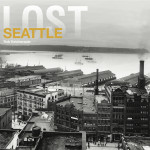Name:
稲荷坂 いなりざか
Inari-zaka, Inari Rise
Location:
赤坂7丁目、5番、7丁目6番の間
Between Akasaka 7-5 and 7-6
This article is part of the special feature Akasaka on the Rise. Check it out in my Live Maps Collection.
The official description:
.jpg)
坂下北側に円通院があり、その境内の稲荷への門があったための坂名。坂上に江戸城中清掃役の町があり掃除坂ともいう。
On the north side of the bottom of the slope used to be Entsuu Shrine, and the name comes from the gate that led to the Inari idols on the shrine grounds. At the top of the slope was the Edo Castle Sanitation Office, so it's also called Cleaning Rise.
Unofficial explanation:
Head north from Akasaka Boulevard (赤坂通り, Akasaka Doori) past Akasaka Elementary School (赤坂小, Akasaka Shou). The rise begins next to the AM PM to the right. The shopping district at its base leads to the bottom of New Rise (新坂, Shinzaka). Continuing up the street after the top of Inari Rise, you'll end up at Drug Mortar Rise (薬研坂, Yagenzaka). [Photo from the base of Inari Rise]
Inari is the Shinto god(dess) of rice and food, represented by a fox at shrines. On maps from the 1600s and early 1700s, there are Inari shrines all over the area, so it's interesting that this one rise picked up that name. [Photos looking up and down from mid-way up the rise.]
Riki Mansion (リキマンション, "mansion" is used in Japanese as a euphamism - they're really condominiums) was built in 1963 just before the Tokyo Olympics, and was the first condominium in Japan. Even more interesting, the developer was Rikidousan (力道山), the father of Japanese professional wrestling. He began pro wrestling in 1949 and used his great business instincts to build an industry. As a developer he built apartments, condos, saunas, restaurants, and more. Much of his activities were focused in bars and cabarets in Roppongi, a short walk from Akasaka.
